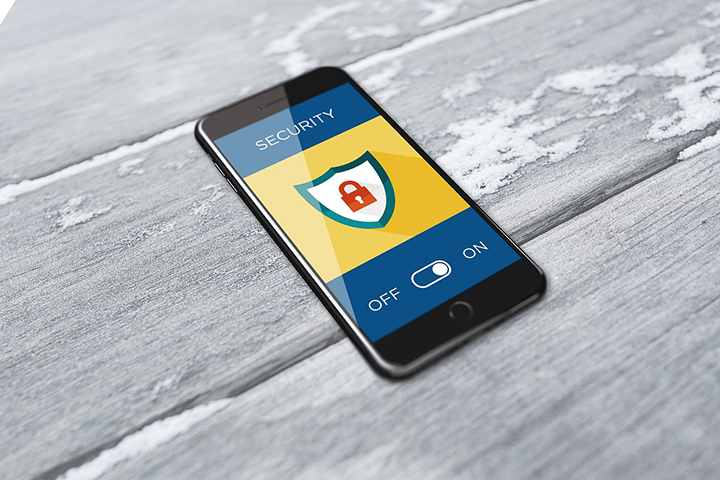How to protect businesses’ IT asset inventory data from cyber threats

The most common cyber attacks and their impact on the Digital Workplace device security policy
Ransomware
The most common cyberattacks within the organization are those of phishing and ransomware : device security policy
In 2023, 72.7% of all companies fell victim to a ransomware attack. By 2031, ransomware will go on to cost nearly $265 billion annually, a significant increase on the $20 billion recorded in 2021 (Cybercrime Magazine). Financial losses caused by ransomware are not the only negative consequence for businesses; on average, companies that pay the ransom only manage to recover 65% of their data, and only 8% of companies recover all their data (Gartner Inc.).
Phishing
Phishing attacks account for 39.6% of all e-mail threats, and an estimated 3.4 million spam e-mails are sent worldwide every day (AAG). 94% of malware is delivered to computers through these fraudulent e-mails.
Other cyberthreats
Other common cyberattacks include man-in-the-middle attacks (a third party interrupts an exchange between two organizations in order to steal their data), SQL injections (a hacker inserts malicious code into the company’s server), DDoS attacks (an attack that disrupts normal network operation), and zero-day threats (targeting network vulnerabilities).
For smartphones, the most common cyberattack is the Trojan Horse, used 95% of the time. The aim is to trick the phone’s owner into secretly introducing an operating flaw. This then enables discreet surveillance, as well as the possibility of remotely deleting or modifying data. Another common attack is SMS phishing, or “smishing”.
It’s not surprising that the rise in cyber-attacks was confirmed during the health crisis.
Repercussions of cybercrime
Apart from the loss of data and funds, cybercrime has other consequences for the corporate digital workplace. Malware transferred via phishing e-mails will cause sluggish network utilization, the appearance of a large number of pop-ups and bugs.
This gradual disabling of the mobile inventory will weaken company productivity, by corrupting communication systems between different teams. device security policy
Solutions to protect sensitive inventory data from cyberthreats : Simple precautions and mobile threat defense tools
There are several solutions for securing your mobile inventory against cybercrime.
Internally, IT teams can update their systems regularly, limit Internet access, implement a multi-step authentication system, train employees in best practices, such as creating strong passwords and changing them regularly, etc. Even if these behaviors contribute to securing the inventory, they are not enough. Even if these behaviors contribute to securing confidential company data, they are not enough.
The emergence of increasingly sophisticated attacks is driving companies to reinforce their mobile device security policy. To do so, they’re turning to solutions such as MDM, MAM, MCM, EMM or UEM.
MDM
Mobile Device Management (MDM) is an endpoint solution with manages mobile devices remotely. These assets can be smartphones, tablets, laptops or even IoT. MDM is also a mobile threat defense solution.
MDM enables mobile inventory managers to:
- Restrict access to mobile inventory data
- Multi-factor authentication to control the identity of users with access to mobile inventory data
- Quickly revoke access rights when the user no longer needs them
- Implement an efficient mobile device security policy (strong passwords, automatic locks)
- Detect potential threats to devices in the mobile inventory
The intuitive interface of MDM solutions reduces the time needed to resolve problems encountered by users, and simplifies mobile device management.
MAM
A Mobile Application Management solution enables administrators to manage, secure and control applications distributed to employees.
A MAM solution enables control of the complete application cycle, from delivery to usage monitoring, including the removal of obsolete applications and version control. As for application security, IT can remotely implement and adjust policies to reinforce compliance and prevent data loss.
In particular, the MAM solution consists of the following functions:
- Deployment and updating of personalized and public applications on the corporate app store
- Application license management
- Identification of managed applications
- Selective data erasure
- Initiation of VPN connections per application
- Data encryption and restrictions on data exchange and copy/paste functionality
MCM
Unlike MAM and MDM solutions, which focus on applications and mobile devices respectively, Mobile Content Management (MCM) concentrates on data security. MCM secures access to corporate data, encrypting and password-protecting it. It also enables data on devices to be remotely wiped.
Mobile Content Management lets you manage content for a group of devices by assigning role-based administration rights, while protecting data with passwords.
EMM
Enterprise Mobility Management (EMM) is a more advanced version of MDM, combining the functionality of MDM with that of Mobile Application Management (MAM), which distributes applications to authorized users, and Mobile Content Management (MCM).
UEM
Unified Endpoint Management (UEM) is the most comprehensive cybersecurity solution, as it encompasses all EMM and MDM functionalities, extending management to all types of endpoint (EMM and MDM focus on mobile device management). The entire IT inventory is managed on a single platform, and the convenience of this centralized management has made UEM the most widespread tool for securing your mobile inventory against cyber-attacks.
Saaswedo offers a UEM solution that can be customized to suit different terminal use cases. To find out more about Saaswedo’s UEM offer, click here.
Cyber attacks are on the rise, with global financial losses running into millions of dollars a year. Companies have to contend with threats such as phishing and ransomware, which compromise data security and can lead to significant productivity and financial losses. To protect themselves, companies can implement solutions to safeguard their mobile inventorys with Unified Endpoint Management (UEM) solutions. These tools make it possible to effectively manage and secure mobile devices and corporate content, while simplifying the management of risks associated with cyberattacks.



